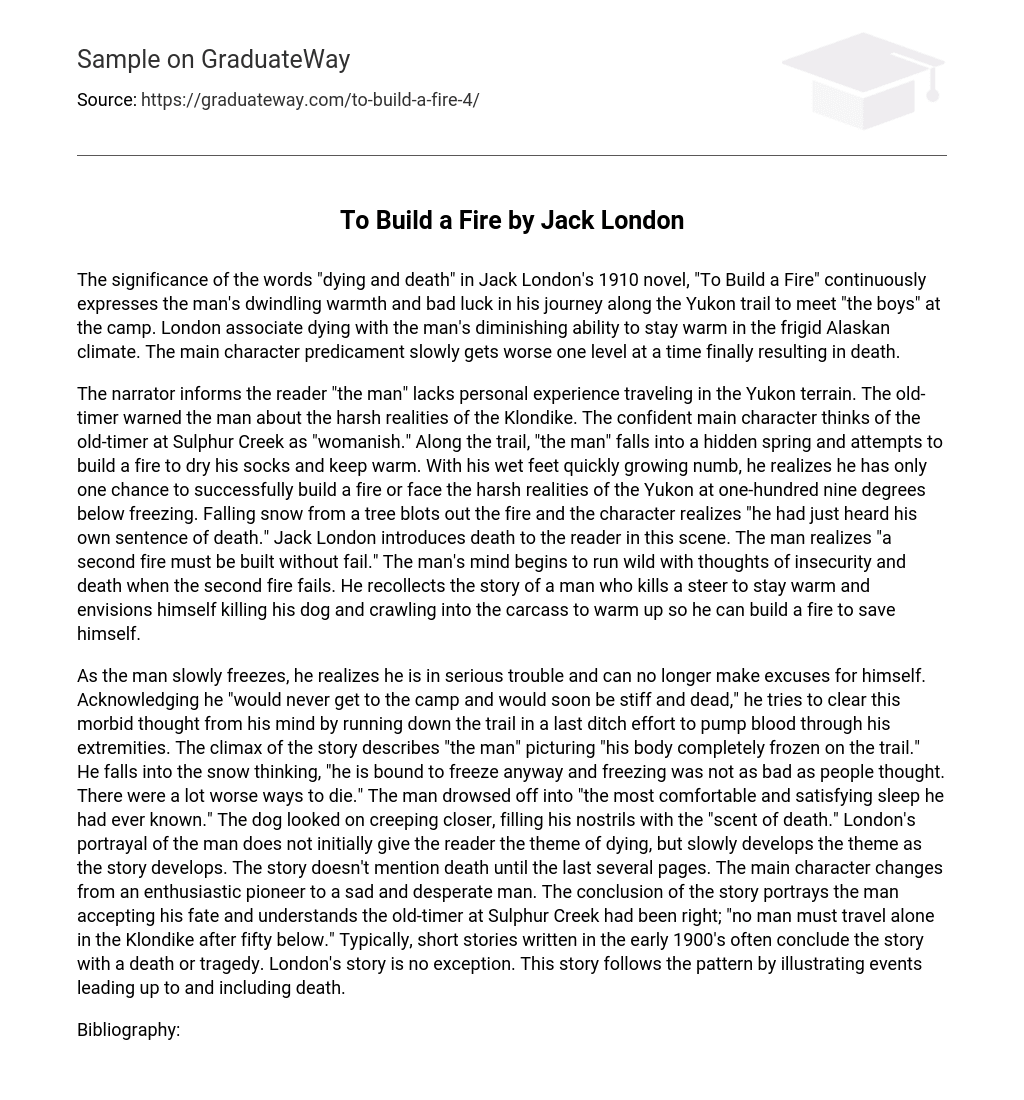The words “dying and death” play a crucial role in Jack London’s 1910 novel, “To Build a Fire,” as they consistently symbolize the protagonist’s decreasing warmth and unfortunate circumstances during his journey along the Yukon trail to meet his fellow companions at the camp. London links dying to the man’s diminishing capacity to stay warm in the extremely cold climate of Alaska. The protagonist’s predicament gradually worsens, step by step, ultimately leading to his demise.
In the text, the narrator notes that “the man” lacks experience traveling in the Yukon terrain and has been warned by an old-timer about the harsh realities of the Klondike. However, the confident main character dismisses the old-timer’s advice as “womanish” when thinking about Sulphur Creek. While on the trail, “the man” falls into a hidden spring and tries to build a fire to dry his socks and keep warm. Realizing his wet feet are growing numb, he understands that he has only one chance to successfully create a fire or face the extreme cold of the Yukon at one-hundred nine degrees below freezing. Unfortunately, falling snow extinguishes the fire, and at that moment, he feels that he has just received a death sentence. Jack London introduces the theme of death in this scene. Understanding that he must build a second fire without fail, the man’s mind becomes filled with thoughts of insecurity and death when the second fire also fails. He recalls a story in which a man kills a steer to warm himself and envisions doing the same with his dog, crawling inside its carcass to save himself by building another fire.
The man realizes he is in serious trouble and can no longer make excuses for himself as he slowly freezes. He acknowledges that he will never make it to the camp and tries to clear this thought from his mind by running down the trail in a last ditch effort to pump blood through his extremities. The climax of the story depicts the man imagining his body completely frozen on the trail. He falls into the snow, believing that freezing is not as bad as people think and that there are worse ways to die. Eventually, he drifts off into a comfortable and satisfying sleep, while the dog watches, getting closer and smelling the scent of death. Initially, London’s portrayal of the man does not suggest the theme of dying, but as the story progresses, it slowly develops. Death is not mentioned until the last few pages. The main character transforms from an enthusiastic pioneer to a sad and desperate man. The conclusion of the story shows the man accepting his fate and realizing that the old-timer at Sulphur Creek was right; no one should travel alone in the Klondike after temperatures drop below fifty degrees. It was common for short stories written in the early 1900s to end with death or tragedy, and London’s story follows this pattern by illustrating events leading up to and including death.
Bibliography:





